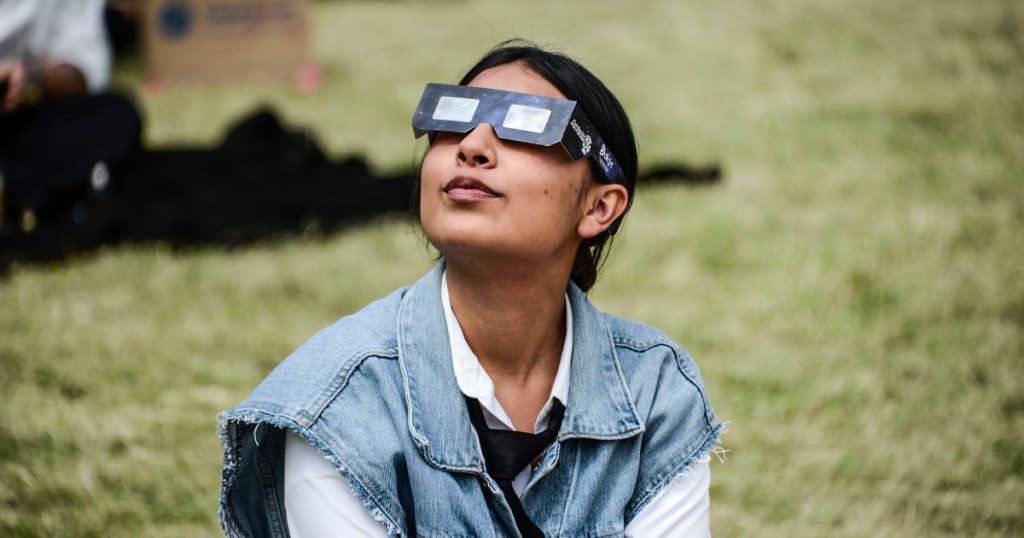For safe viewing of an eclipse, it is essential to wear specialized glasses or create a pinhole projector to protect your eyes. Regular sunglasses are not sufficient to protect against the harmful effects of looking directly at the sun during an eclipse. Proper eclipse glasses, equipped with the ISO 12312-2 filter, are crucial for preventing permanent eye damage. Watching an eclipse without these protective measures can lead to solar retinopathy, causing issues like decreased vision and blind spots.
The only safe moment to view the eclipse without glasses is during the brief period of totality when the moon completely covers the sun. This is the time when it is safe to remove your glasses, as there is no risk of damaging your eyes during this phase. Totality typically lasts around three-and-a-half to four minutes, depending on your location. For partial eclipses, it is important to keep your eclipse glasses on throughout the event to protect your eyes.
When selecting eclipse glasses, it is essential to ensure that they are from a reputable source and meet safety standards. NASA does not endorse any particular brand, but recommends referring to the American Astronomical Society’s list of approved options. To avoid counterfeit glasses, it is advised to purchase from reputable retailers rather than online marketplaces with third-party vendors. If you have eclipse glasses from a previous event, such as the 2017 solar eclipse, they can be reused as long as they are not damaged.
If you are unable to obtain proper eclipse glasses, you can still enjoy the eclipse safely by creating a pinhole projector. This simple device allows sunlight to pass through a small hole, projecting an image of the sun onto a surface without the need to look directly at it. By following instructions to create a pinhole projector using household items like paper, aluminum foil, and a pin, you can safely view the eclipse without risking eye damage. Alternatively, looking at the ground under a shady tree during an eclipse may also reveal the crescent-shaped shadows caused by the event.
It is important to follow safety guidelines when viewing an eclipse to protect your eyes from damage. Using tools like telescopes or binoculars without proper solar filters can result in severe eye injury, so it is best to avoid using them during the event. By taking precautions, such as wearing approved eclipse glasses and creating a pinhole projector, you can enjoy the spectacle of an eclipse safely. Remember to follow instructions carefully and only look at the sun through safe viewing methods to prevent any potential harm to your eyes.


